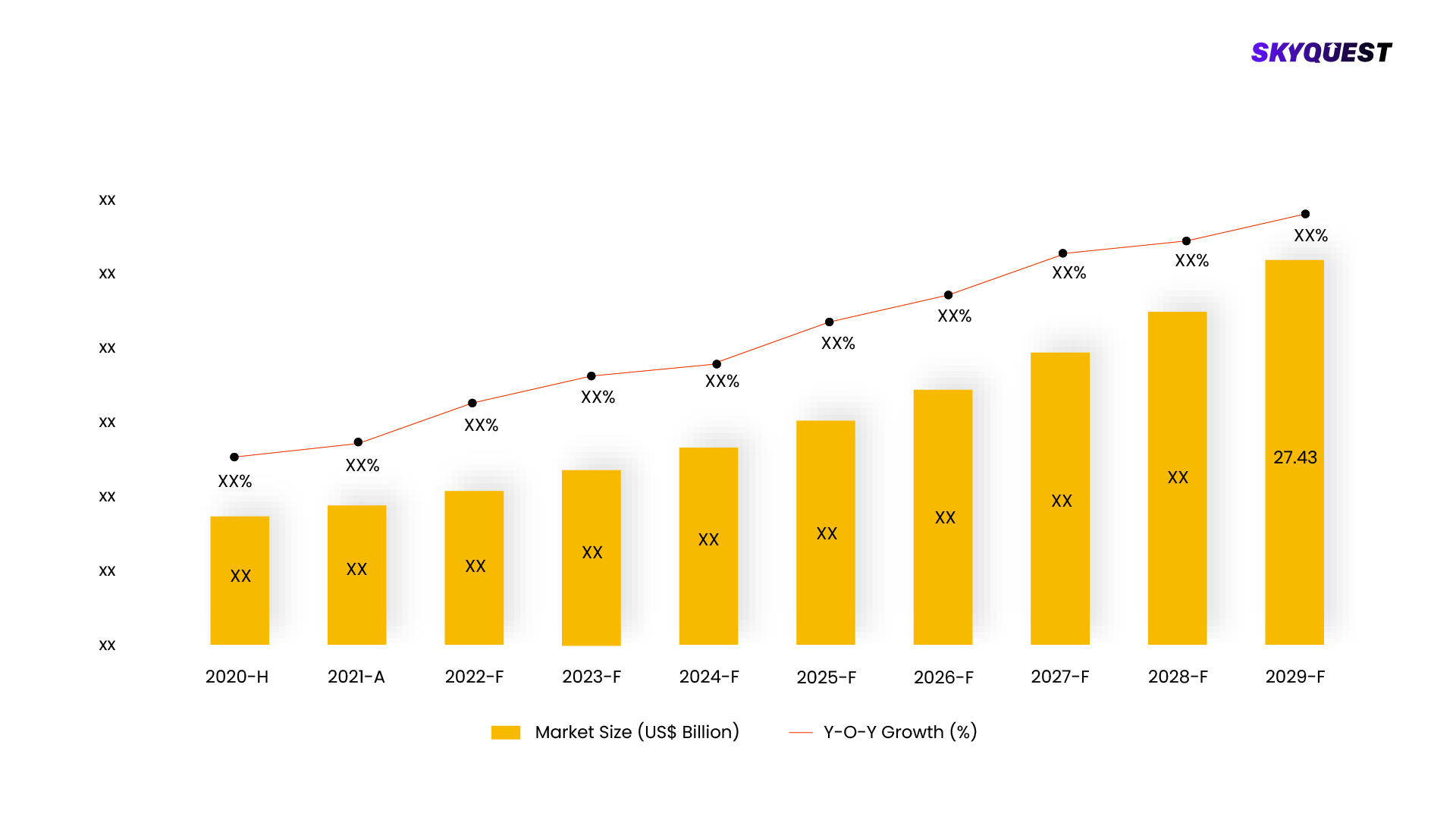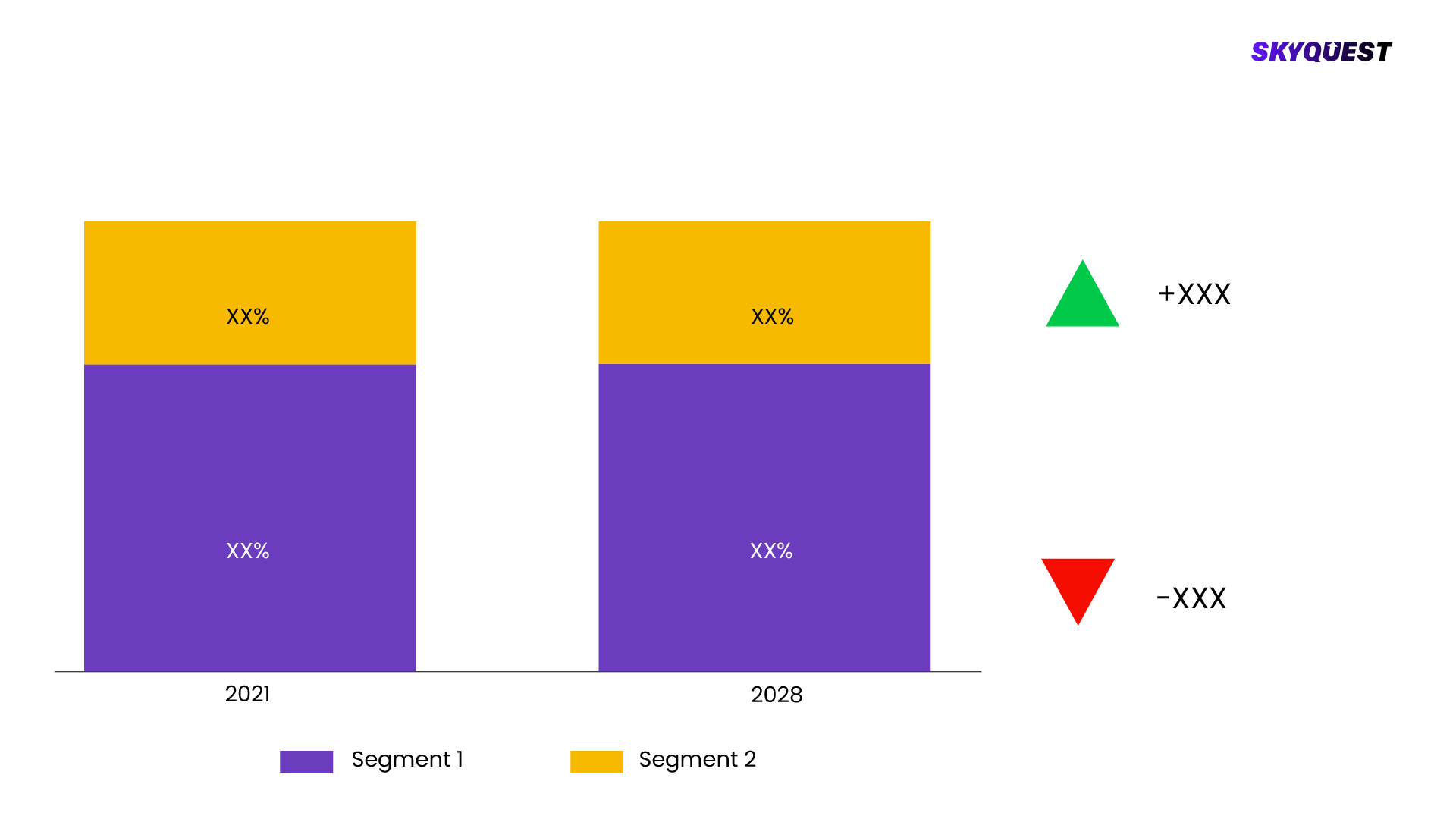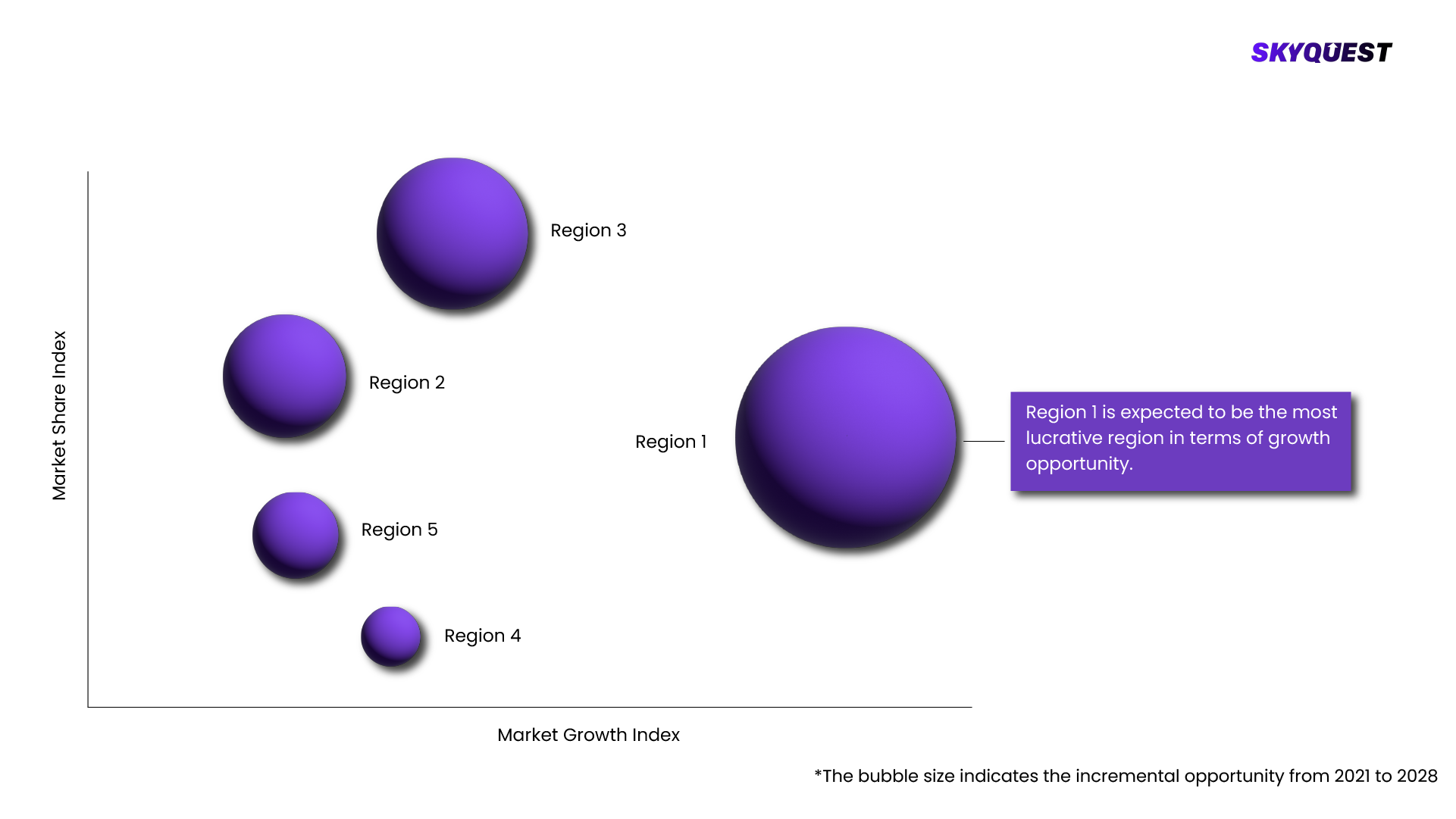
Food and Beverage Processing Equipment Market
Report ID: UCMIG20D2130

Report ID:
UCMIG20D2130 |
Region:
Global |
Published Date: Upcoming |
Pages:
165
|Tables:
0
|Figures:
0
The global food and beverage processing equipment market has showcased robust expansion, recording an estimated value of USD 66.42 billion in 2022. This growth trajectory is set to persist as projections indicate an ascent to approximately USD 105.39 billion by 2030, reflecting a significant compound annual growth rate (CAGR) of 5.94% over the forecast period spanning from 2022 to 2030. The market's evolution is driven by a combination of factors, including the escalating demand for processed and packaged food and beverages, changing consumer preferences, stringent quality and safety regulations, and ongoing technological advancements. As manufacturers prioritize automation, efficiency, and enhanced production capabilities, the adoption of cutting-edge processing equipment is becoming increasingly vital. Moreover, the integration of smart manufacturing technologies, sustainable practices, and innovations in food preservation and packaging are anticipated to further drive market growth. As the food and beverage industry continues to navigate complexities related to supply chain disruptions and evolving consumer expectations, the food and beverage processing equipment market remains pivotal in shaping the future of food production, quality assurance, and safety compliance on a global scale.

This report is being written to illustrate the market opportunity by region and by segments, indicating opportunity areas for the vendors to tap upon. To estimate the opportunity, it was very important to understand the current market scenario and the way it will grow in future.
Production and consumption patterns are being carefully compared to forecast the market. Other factors considered to forecast the market are the growth of the adjacent market, revenue growth of the key market vendors, scenario-based analysis, and market segment growth.
The market size was determined by estimating the market through a top-down and bottom-up approach, which was further validated with industry interviews. Considering the nature of the market we derived the Electrical Components & Equipment by segment aggregation, the contribution of the Electrical Components & Equipment in Capital Goods and vendor share.
To determine the growth of the market factors such as drivers, trends, restraints, and opportunities were identified, and the impact of these factors was analyzed to determine the market growth. To understand the market growth in detail, we have analyzed the year-on-year growth of the market. Also, historic growth rates were compared to determine growth patterns.
The Food and Beverage Processing Equipment Market is segmented by Type, Mode of Operation, End-Product Form, Application, Geography. We are analyzing the market of these segments to identify which segment is the largest now and in the future, which segment has the highest growth rate, and the segment which offers the opportunity in the future.

Food and Beverage Processing Equipment Market is being analyzed by North America, Europe, Asia-Pacific (APAC), Latin America (LATAM), Middle East & Africa (MEA) regions. Key countries including the U.S., Canada, Germany, France, UK, Italy, Spain, China, India, Japan, Brazil, GCC Countries, and South Africa among others were analyzed considering various micro and macro trends.

SkyQuest's expert analysts have conducted a risk analysis to understand the impact of external extremities on Food and Beverage Processing Equipment Market. We analyzed how geopolitical influence, natural disasters, climate change, legal scenario, economic impact, trade & economic policies, social & ethnic concerns, and demographic changes might affect Food and Beverage Processing Equipment Market's supply chain, distribution, and total revenue growth.
To understand the competitive landscape, we are analyzing key Food and Beverage Processing Equipment Market vendors in the market. To understand the competitive rivalry, we are comparing the revenue, expenses, resources, product portfolio, region coverage, market share, key initiatives, product launches, and any news related to the Food and Beverage Processing Equipment Market.
To validate our hypothesis and validate our findings on the market ecosystem, we are also conducting a detailed porter's five forces analysis. Competitive Rivalry, Supplier Power, Buyer Power, Threat of Substitution, and Threat of New Entry each force is analyzed by various parameters governing those forces.
The Food and Beverage Processing Equipment Market is being analyzed by SkyQuest's analysts with the help of 20+ scheduled Primary interviews from both the demand and supply sides. We have already invested more than 250 hours on this report and are still refining our date to provide authenticated data to your readers and clients. Exhaustive primary and secondary research is conducted to collect information on the market, peer market, and parent market.
Our cross-industry experts and revenue-impact consultants at SkyQuest enable our clients to convert market intelligence into actionable, quantifiable results through personalized engagement.
| Report Attribute | Details |
|---|---|
| The base year for estimation | 2021 |
| Historical data | 2016 – 2022 |
| Forecast period | 2022 – 2028 |
| Report coverage | Revenue forecast, volume forecast, company ranking, competitive landscape, growth factors, and trends, Pricing Analysis |
| Segments covered |
|
| Regional scope | North America, Europe, Asia-Pacific (APAC), Latin America (LATAM), Middle East & Africa (MEA) |
| Country scope | U.S., Canada, Germany, France, UK, Italy, Spain, China, India, Japan, Brazil, GCC Countries, South Africa |
| Key companies profiled |
|
| Customization scope | Free report customization (15% Free customization) with purchase. Addition or alteration to country, regional & segment scope. |
| Pricing and purchase options | Reap the benefits of customized purchase options to fit your specific research requirements. |
Executive Summary
Market overview
Parent Market Analysis
Market overview
Market size
KEY MARKET INSIGHTS
COVID IMPACT
MARKET DYNAMICS & OUTLOOK
Market Size by Region
KEY COMPANY PROFILES
For the Food and Beverage Processing Equipment Market, our research methodology involved a mixture of primary and secondary data sources. Key steps involved in the research process are listed below:
1. Information Procurement: This stage involved the procurement of Market data or related information via primary and secondary sources. The various secondary sources used included various company websites, annual reports, trade databases, and paid databases such as Hoover's, Bloomberg Business, Factiva, and Avention. Our team did 45 primary interactions Globally which included several stakeholders such as manufacturers, customers, key opinion leaders, etc. Overall, information procurement was one of the most extensive stages in our research process.
2. Information Analysis: This step involved triangulation of data through bottom-up and top-down approaches to estimate and validate the total size and future estimate of the Food and Beverage Processing Equipment Market.
3. Report Formulation: The final step entailed the placement of data points in appropriate Market spaces in an attempt to deduce viable conclusions.
4. Validation & Publishing: Validation is the most important step in the process. Validation & re-validation via an intricately designed process helped us finalize data points to be used for final calculations. The final Market estimates and forecasts were then aligned and sent to our panel of industry experts for validation of data. Once the validation was done the report was sent to our Quality Assurance team to ensure adherence to style guides, consistency & design.
Customization Options
With the given market data, our dedicated team of analysts can offer you the following customization options are available for the Food and Beverage Processing Equipment Market:
Product Analysis: Product matrix, which offers a detailed comparison of the product portfolio of companies.
Regional Analysis: Further analysis of the Food and Beverage Processing Equipment Market for additional countries.
Competitive Analysis: Detailed analysis and profiling of additional Market players & comparative analysis of competitive products.
Go to Market Strategy: Find the high-growth channels to invest your marketing efforts and increase your customer base.
Innovation Mapping: Identify racial solutions and innovation, connected to deep ecosystems of innovators, start-ups, academics, and strategic partners.
Category Intelligence: Customized intelligence that is relevant to their supply Markets will enable them to make smarter sourcing decisions and improve their category management.
Public Company Transcript Analysis: To improve the investment performance by generating new alpha and making better-informed decisions.
Social Media Listening: To analyze the conversations and trends happening not just around your brand, but around your industry as a whole, and use those insights to make better Marketing decisions.
The market for Food and Beverage Processing Equipment was estimated to be valued at US$ XX Mn in 2021.
The Food and Beverage Processing Equipment Market is estimated to grow at a CAGR of XX% by 2028.
The Food and Beverage Processing Equipment Market is segmented on the basis of Type, Mode of Operation, End-Product Form, Application, Geography.
Based on region, the Food and Beverage Processing Equipment Market is segmented into North America, Europe, Asia Pacific, Middle East & Africa and Latin America.
The key players operating in the Food and Beverage Processing Equipment Market are sights, The food and beverage processing equipment market size was estimated at USD 66.42 billion in 2022 and is projected to hit around USD 105.39 billion by 2030, growing at a CAGR of 5.94% during the forecast period from 2022 to 2030., Key Takeaways:, By Type, the processing segment is predicted to have larger markets share by 2030., Fruit juices, non-alcoholic drinks, and alcoholic drinks are all driving the market growth., By application, the bakery & confectionery products segment contributed more than 22% of revenue share in 2021 and is predicted to have the largest market share by 2030., By end-product form, the solid segment is predicted to have the largest market share from 2022 to 2030., By mode of operation, the semi-automatic segment captured more than 51% of revenue share in 2021. , The Asia Pacific region held the highest revenue share of around 38% in 2021, The governments of various developing as well as developed nations have strict regulations and standards on the manufacturing and distribution of food and beverages across the globe. The equipment used in the production of this food and the processing of the beverages is also of great importance. Food processing equipment and beverages processing equipment all the processing machines that handle cook stores and packed the food products in order to offer to the market. Processing food products and beverages is extremely helpful and extend the shelf life. A wide range of food processing equipment is available for different types of food products. Equipment are available for bakery dairy beverages etc. Equipment is designed for carrying out various processes on the food. It involves washing, separating baking mixing, and sealing food products in order to offer the final product. These industries or established in order to transform the raw materials derived from agricultural products how transform some of the already processed food products into ready-to-cook food products and beverages. Molders, blenders, cutters, kettles, vacuum pans, mixers, and ovens are the different types of equipment used in this market. An increase in the demand for bakery products, confectionery dairy products and meat which is available in the form of processed food or convenient food it's driving the growth of the market. Major companies are investing in order to expand their businesses to different territories. Food and beverage processing equipment provides efficient production and facilitates the production of quality food products. The use of industrial robots and automation in this industry is helpful and increases the revenue generated. There's an increasing trend of ordering food online in recent years the market is expected to grow and online platforms are providing great support for the growth of this market., Growth Factors, The increase in the demand for processed food products by consumers across many nations has led to an increase in demand for the equipment required for processing the food. Increasing demand is the most important factor responsible for the growth of the market. Rapid industrialization and urbanization in developing nations is also responsible for the growth of this market. Dual-income households or creating a hectic work life and busy schedules which increase the dependency of these couples on packaged food and beverages. There is a major shift in the eating habits of many consumers even in developing nations. As packaged and processed food and beverages are extremely convenient It is replaced by regular meals in developing as well as developed economies. Major market players are investing a lot of amounts in order to come up with technologically advanced equipment for use in this industry. In order to increase the production capacity of this equipment there is constant research and development. The use of this equipment have increased the output or the production capacity of these industries. Doesn't increase awareness regarding the benefits of this equipment in the developing nations which are replacing the old equipment with the more advanced equipment which requires very less or no human intervention. Due to the reduced human intervention, there is no contamination of food products or beverages. The quality of food products and beverages is maintained due to automation in this industry. An increase in the demand for healthy beverages is also driving the growth of the market. Owing to all of these reasons the food and beverage processing equipment market is expected to grow well during the forecast period., Segments Insight, Type Insights, The processing equipment segment in the food and beverage processing equipment market is expected to have larger markets share in the coming years. The processing equipment segment has dominated the market in the past. An increase in the demand for bakery products across the globe is leading to the growth of this segment. Bakery products and confectionery products especially bread is consumed in high quantity across the European and North American region. Bread is a staple food of many European countries and a great amount of bread is consumed every year by a single person in these countries. An increase in the demand for other bakery items in developing nations is also helping in the growth of this segment. Rapid industrialization and urbanization that doesn't increase in the demand for beverages in developing nations. Increased per capita income and high disposable income insert resulting in creating a demand for beverages across the developing nations. Fruit juices, non-alcoholic drinks, and alcoholic drinks are all driving the market growth. The use of dairy products for manufacturing other products and the consumption of milk across many states in the Asia Pacific region is expected to drive market growth. Followed by the processing segment the preprocessing segment will also have a good market share during the forecast period. Preprocessing methods include washing, Sorting, peeling, cutting, slicing, grinding, blending, etc. all the raw materials or products derived from agriculture undergo these preprocesses before the final product is achieved. Drying, cooling, and freezing are the different types of processes involved in the production of the final products which have an increased shelf life., Application Insights, On the basis of application, the bakery and confectionery segment accounted for more than 22% of revenue share in 2021 and is expected to have the largest market share in the coming years. Equipment are used for manufacturing alcoholic beverages meat and poultry products, fish and seafood products. Bakery and confectionery products how high is demand in countries like Germany, France and UK. As bread is consumed as a Staple food across the European region the market is expected to grow. on average every year one person in the European region consumes about 50 kilograms of bread. Commercial bakeries use the equipment for manufacturing loaves of bread. The equipment available for the production of this bread are able to generate large quantities in less amount of time. Apart from bakery and confectionery products dairy products are also expected to have a good amount of market share in the forecast period. The dairy products segment has great demand in the Asia Pacific region. The equipment required for the bakery and confectionery products is ovens, cutters, blenders, and molders. Increasing demand for frozen meat products in developed nations is expected to help in the growth of the market during the forecast period. North American region and the European region have the greatest demand for meat and poultry products. Increasing demand of this product is leading to an increase in the usage of equipment needed for the processing of these food products., End-Product Form Insights, On the basis of the end product, the solid segment is expected to have the largest market share during the forecast period. The solid segment is expected to grow due to many factors. In order to produce a solid product there is an ease of handling these products. It is extremely easy to pack the end product which is not the case for liquid or semisolid products. Transportation and storage of solid food products is extremely easy as compared to semisolid or liquid products. There is an increased risk of damage and contamination., Mode of Operation Insights, The different modes of operation which are automatic and semi-automatic are used in this industry. The semi-automatic segment accounted for more than 51% of revenue share in 2021. Automation in these industries have led to an increase in the output of the product and the time consumed is less. Automation in this industry has also reduced the cost of operations as compared to the old machines. The automatic segment consumes less energy compared to the semi-automatic segment so this happens to be a green option. Labor is extremely expensive in many developed nations and automation or the use of robotics in this industry has reduced the demand for human labor. All of these factors have led to the optimum utilization of all the resources in manufacturing the products. Food and Beverage Processing Equipment Market Share, By Region, 2021 (%), Regions, Revenue Share in 2021 (%), North America, 25%, Asia Pacific, 38%, Europe, 22%, Latin America, 9.5%, MEA, 5.5%, Regional Insights, As there is a growing demand for food and beverage processing equipment in the Asia Pacific region this region held the biggest revenue share of around 38% in 2021. There is an increasing focus on the development of advanced equipment which would help in increasing the production capacity of these industries. Many major market players are present in The Asia Pacific region. Growing demand for processed foods from nations like Australia, India, China, and New Zealand is driving the growth of the market. The increasing population enters demand for quick-service restaurants is growing in the Asia Pacific region and this also is a leading cause for the growth of this market. The industry is focusing on manufacturing technologically advanced and innovative equipments for generating larger outputs to satisfy the demands of the growing population., Key Market Developments, Tomra Systems came up with equipment in order to have effective and smart material sorting which will be helpful in meeting the demand of the consumers. Advanced sorting solutions were launched by this organization. AUTOSORT SPEEDAIR and AUTOSORT were launched in the year 2020 as sorting solutions. Homogenizer equipment it was launched in June 2021 by SPX FLOW. A product in the form of a single compact unit named APV Pilot 4T will be used in the beverages industry. This equipment will help in having a uniform solution of immiscible liquids. This product is expected to be a boon for the beverages processing equipment market, KEY MARKET SEGMENTS, By Type, Pre-Processing, Sorting & Grading, Cutting, Peeling, Grinding, Slicing, and Washing, Coating, Drying, Cooling, and Freezing, Thermal, Homogenization, Filtration, Pressing , Mixing & Blending, Processing, Forming, Extruding, By Mode of Operation , Automatic, Semi-Automatic, By End-Product Form, Solid, Liquid, Semi-Solid, By Application, Bakery & Confectionery Products, Meat & Poultry, Dairy Products, Non-Alcoholic Beverages, Alcoholic Beverages, Fish & Seafood, Other Applications (fruits, vegetables, ready-to-eat meals, sauces, and dressings), By Geography, North America, Europe, Asia-Pacific, Latin America, Middle East & Africa (MEA), KEY MARKET PLAYERS, Marel (Iceland), Equipamientos Cárnicos, S.L (Spain), Clextral (France), SPX FLOW (US), Bigtem Makine (Turkey) , JBT (US), The Middleby Corporation (US), Heat and ControlInc. (US), Alfa Laval (Sweden), Heat and Control, Inc. (US), BAADER (Germany), Dover Corporation (US) , GEA Group (Germany), Bühler (Switzerland) , TNA Australia Pty Ltd. (Australia), Bucher Industries (Switzerland), FENCO Food Machinery (Italy), Krones Group (Germany), Finis Food Processing Equipment B.V. (Netherlands), Bettcher IndustriesInc. (US), Anko Food Machine Co. Ltd. (Taiwan).
Want to customize this report? This report can be personalized according to your needs. Our analysts and industry experts will work directly with you to understand your requirements and provide you with customized data in a short amount of time. We offer $1000 worth of FREE customization at the time of purchase.

Report ID: UCMIG20D2130
sales@skyquestt.com
USA +1 351-333-4748